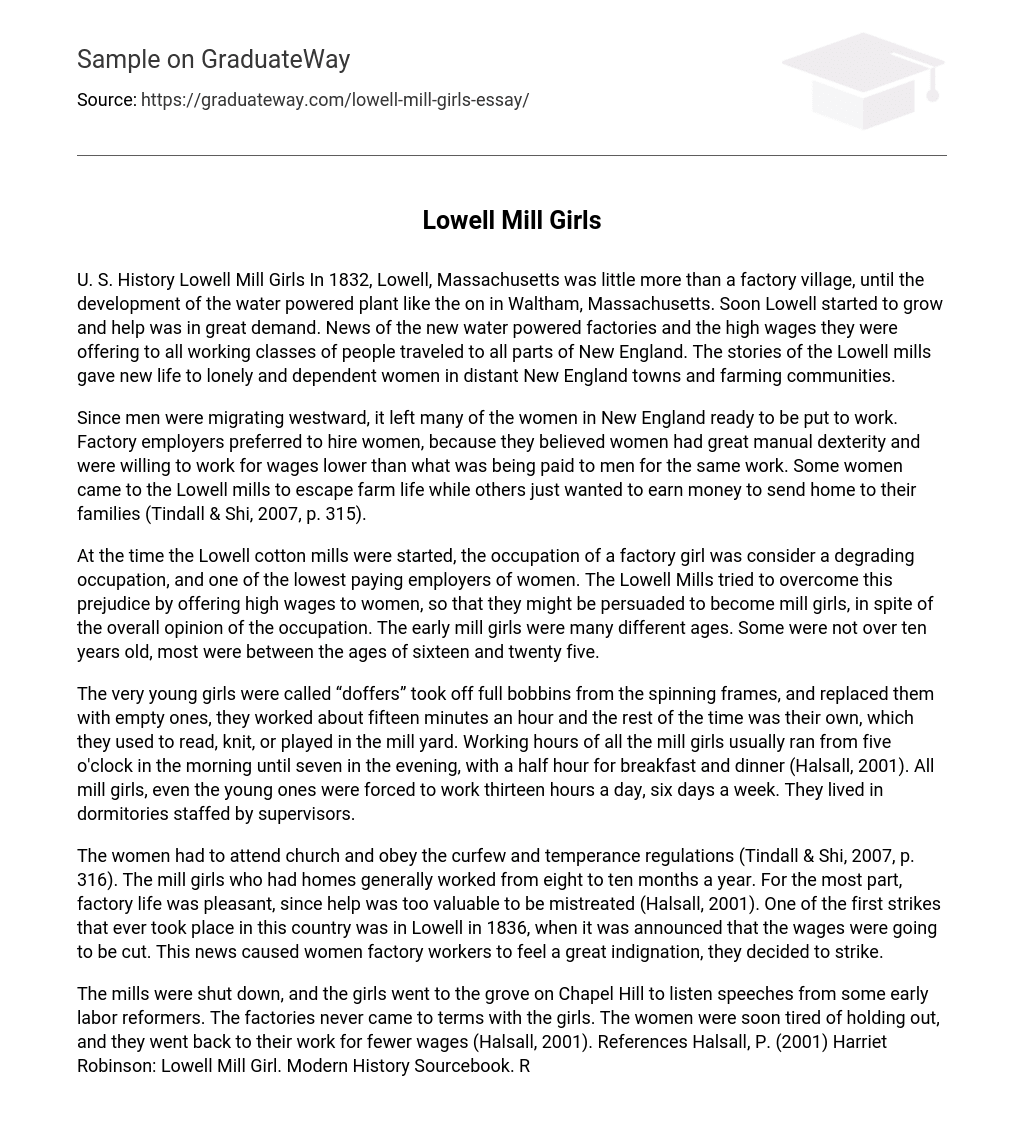In 1832, Lowell, Massachusetts was little more than a factory village, until the development of the water powered plant like the on in Waltham, Massachusetts. Soon Lowell started to grow and help was in great demand. News of the new water powered factories and the high wages they were offering to all working classes of people traveled to all parts of New England. The stories of the Lowell mills gave new life to lonely and dependent women in distant New England towns and farming communities.
Since men were migrating westward, it left many of the women in New England ready to be put to work. Factory employers preferred to hire women, because they believed women had great manual dexterity and were willing to work for wages lower than what was being paid to men for the same work. Some women came to the Lowell mills to escape farm life while others just wanted to earn money to send home to their families (Tindall & Shi, 2007, p. 315).
At the time the Lowell cotton mills were started, the occupation of a factory girl was consider a degrading occupation, and one of the lowest paying employers of women. The Lowell Mills tried to overcome this prejudice by offering high wages to women, so that they might be persuaded to become mill girls, in spite of the overall opinion of the occupation. The early mill girls were many different ages. Some were not over ten years old, most were between the ages of sixteen and twenty five.
The very young girls were called “doffers” took off full bobbins from the spinning frames, and replaced them with empty ones, they worked about fifteen minutes an hour and the rest of the time was their own, which they used to read, knit, or played in the mill yard. Working hours of all the mill girls usually ran from five o’clock in the morning until seven in the evening, with a half hour for breakfast and dinner (Halsall, 2001). All mill girls, even the young ones were forced to work thirteen hours a day, six days a week. They lived in dormitories staffed by supervisors.
The women had to attend church and obey the curfew and temperance regulations (Tindall & Shi, 2007, p. 316). The mill girls who had homes generally worked from eight to ten months a year. For the most part, factory life was pleasant, since help was too valuable to be mistreated (Halsall, 2001). One of the first strikes that ever took place in this country was in Lowell in 1836, when it was announced that the wages were going to be cut. This news caused women factory workers to feel a great indignation, they decided to strike.
The mills were shut down, and the girls went to the grove on Chapel Hill to listen speeches from some early labor reformers. The factories never came to terms with the girls. The women were soon tired of holding out, and they went back to their work for fewer wages (Halsall, 2001).
References
- Halsall, P. (2001) Harriet Robinson: Lowell Mill Girl. Modern History Sourcebook. Retrieved April 3, 2010. From http://www. fordham. edu/halsall/mod/robinson-lowell. html
- Tindall, G. B. , & Shi, D. E. (2007). America, A Narrative History. (7th ed. ) New York. W. W. Norton & Company, Inc.





